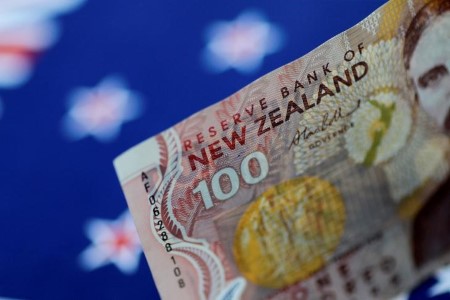- RBNZ expected to keep rates at 1.75 percent on Aug. 10
- RBNZ could strike dovish tone after softer data
- Rate decision due Thurs 0900 local time, Wed 2100 GMT
When the Reserve Bank of New Zealand (RBNZ) gathers this week for Graeme Wheeler's last meeting as governor, investors will be looking for signs that the central bank is getting uncomfortable with the lofty local dollar.
After recent data vindicated the central bank's stance that interest rates should remain at record lows for longer, market participants will scour the policy statement for clues that the RBNZ has become even more accommodative.
All 21 economists polled by Reuters expect the RBNZ to keep interest rates on hold at 1.75 percent on Thursday, but some expect the bank to strike a more dovish tone by acknowledging some softening in recent indicators.
"The bank will acknowledge the balance of data being weaker and I think that will give it a dovish sort of view," said Doug Steel, senior economist at BNZ.
He said considerable attention would be paid to the statement's tone, given the balance of information since the last statement - particularly the lower inflation reading and higher currency.
"Those things will be putting downward pressure on the Reserve Bank's inflation forecasts."
The kiwi has risen nearly 7 percent in 2017 and recently hit its highest levels in more than two years. Failure to talk down the currency could see the local dollar rise in the same way it did in June, when markets had expected a greater focus on the currency from the RBNZ.
Investors are also looking for the central bank's take on recent data which showed the economy growing by less than expected in the first quarter, inflation slowing by more than forecast in the second quarter, and employment unexpectedly contracting and wage growth slackening in April-June.
While the central bank could look through the temporary factors influencing prices and take into account the mixed nature of the jobs release - the jobless rate fell - the overall picture is one of an economy that is losing some momentum after the robust growth of recent years.
"We are expecting the RBNZ to sound more cautious, you are coming off the back of a New Zealand dollar which is higher than the Reserve Bank was expecting in their latest MPS (monetary policy statement) and we have had that soft data," said ASB Economist Kim Mundy.
She said she expected the RBNZ to signal a more subdued inflation outlook in its monetary policy statement by pushing out the timing of the first rate hike.
Nine of 20 economists in the poll expected a rate rise of at least 25 basis points by the second quarter of 2018. By contrast, the RBNZ only sees an official cash rate of 2 percent being reached in the first quarter of 2020, according to its May forecasts.
But Christina Leung, senior economist at New Zealand Institute of Economic Research, said the Reserve Bank's netural bias gave it some policy latitude.
"It doesn't need to change because in a way it's more dovish than what people prior to this softer data had been expecting anyway," she said.
- Forums
- NZX - General
- News: PREVIEW-Lofty NZ dollar, softer data in focus as central bank meets






